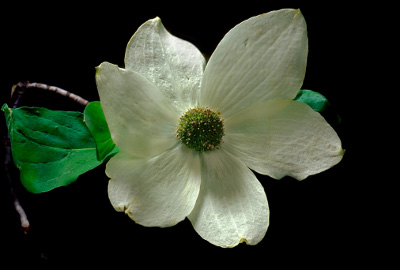Dogwood Tree
Category: Deciduous Trees

Facts about Dogwood Tree, "Scientific name for Dogwood Tree is Cornus". Dogwood Tree is a common name used for dogwood species. Dogwood Trees belong to the family of cornaceae. The scientific name is cornus and it is a genius of about 60 species of woody plants. Most of these Dogwood Trees are deciduous trees and only a few species that are herbaceous. There are also a few of the woody plants that are evergreen.
Dogwood Trees grow only to 20 to 30 feet (6.09 to 9.14 meters). They have different features that distinguish them. Some species have small heads of flowers that are not conspicuous, surrounded by involucres of big, white petal-like bracts. Others have open clusters of petal bearing flowers.
Most of the Dogwood Tree species are native to North America, China, Japan and Southern United States.
The species of Dogwood Tree include, Cornus Florida which is grown in North America, Cornus nuttallii which is grown in Western North America, Cornus Kousa, mostly grown in Asian and the two boreal species.
The Dogwood Trees have very simple leaves which are un-toothed and as they approach the leaf margins the veins curve. In most cases, the Dogwood Trees have opposite leaves with only a few having alternate ones.
Their flowers have four parts. Several of the Dogwood Tree flowers open separately in clusters whereas others the flowers are tightly clustered and don’t have showy petals. The ones without showy petals have four to six big white petal-like bracts.
powdery mildew and Aphids can be a problem for the Dogwood Tree, but a horticultural oils and fungicidal medication applied in the spring can help prevent diseases and insect prevention. The Dogwood Tree anthracnose fungus can be prevented by planting the trees where the morning sun shines on them.
You can tell a Dogwood Trees age by the number of growth rings inside. Growth rings size shows what kind of conditions accrued that year, the temperature and if it was a dry or wet year.
Bark of the Dogwood Tree protects it from the elements and is made up of dead cells.
Dogwood Tree roots usually grow two to three times the width of the tree branches. The ideal time to fertilize your Dogwood Tree is in late fall or early spring. If you want to transplant a Dogwood Tree do it in fall, this is ideal for most trees.
All Dogwood Tree species have fruits that are drupes. They either have one or two seeds with bright colors. Most of these fruijts are edible but normally they don’t have much flavor. In fact cornus kousa and cornus mas have berries that make wines, treats colds and flu’s, and used for direct eating. This is why they are mostly sold as edible fruit trees.
Dogwood Tree leaves are made up of many colored pigments, green chlorophyll hides the colors during the growing season of spring and summer. As days get shorter and cooler temperatures come in the fall, it cause the chlorophyll to break down and than the other color pigments can be seen.
Dogwood Tree growth is referred to as Meristem (The undifferentiated embryonic plant tissue from which new cells are created, as that at the tip of a root or stem). This tissue can be found at the tips of shoots and leaves. Inside the stem growth in thickness occurs at the vascular cambium.
Dogwood Trees make their own food from sunlight, carbon dioxide, water, and nutrients from the soil.
The Dogwood Trees are admired and used by many for their beautiful wood. Their wood is used to make cutting boards among others. Birds rely on these trees for their food especially the red seeds and shelter.

 Back To Category Deciduous Trees
Back To Category Deciduous Trees